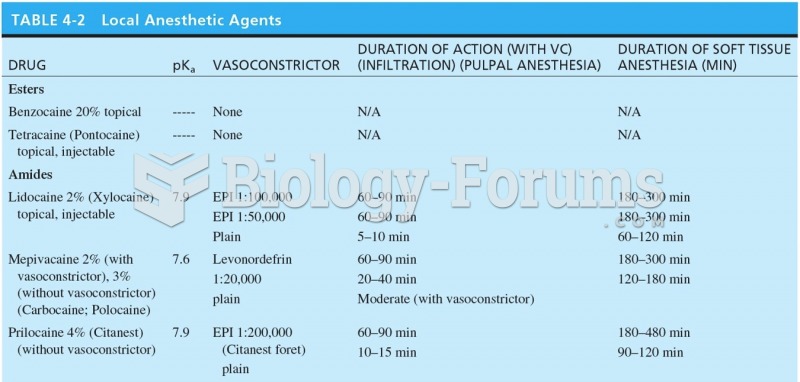Answer to Question 1
Correct Answer: 3
Rationale 1: Never take at home is incorrect because it may be prescribed for the client to take at home.
Rationale 2: Take only when drowsiness is present is incorrect because this is an adverse effect of the drug.
Rationale 3: The client should be instructed to report any unusual heart palpitations, lightheadedness, drowsiness, or confusion.
Rationale 4: Allow family members to use as needed is incorrect because the client should not share prescription medications.
Global Rationale: The client should be instructed to report any unusual heart palpitations, lightheadedness, drowsiness, or confusion. Never take at home is incorrect because it may be prescribed for the client to take at home. Take only when drowsiness is present is incorrect because this is an adverse effect of the drug. Allow family members to use as needed is incorrect because the client should not share prescription medications.
Answer to Question 2
Correct Answer: 1
Rationale 1: Small amounts of epinephrine are sometimes added to the anesthetic solution to constrict blood vessels in the immediate area where the local anesthetic is applied. This keeps the anesthetic in the area longer and lengthens the duration of action of the drug.
Rationale 2: Diazepam (Valium) is a benzodiazepine.
Rationale 3: Diphenhydramine (Benadryl) is an antihistamine.
Rationale 4: Lidocaine (Xylocaine) is an anesthetic.
Global Rationale: Small amounts of epinephrine are sometimes added to the anesthetic solution to constrict blood vessels in the immediate area where the local anesthetic is applied. This keeps the anesthetic in the area longer and lengthens the duration of action of the drug. Diazepam (Valium) is a benzodiazepine. Diphenhydramine (Benadryl) is an antihistamine. Lidocaine (Xylocaine) is an anesthetic.







